If you’re navigating the world of ‘EPs’, and ‘SEN/SEND’, then you may have come across the term EHCP…but what exactly is it, and when is it appropriate?
Let’s break it down in simple, clear terms.
What is an EHCP?
An Education, Health and Care Plan (EHCP) is a legal document designed to support children and young people with the most complex, long-term SEND needs.
It goes beyond what regular SEND support in schools can offer and outlines what a child needs to thrive; educationally, emotionally, socially, and sometimes physically.
It’s not for every child with SEND, but rather for the small percentage whose difficulties are significant, severe, or complex, and require coordinated support across education, health, and care services.
How does a child get an EHCP?
To even begin the EHCP journey, a formal EHCP Needs Assessment (EHCNA) must be requested. This can be initiated by a parent, school, or young person themselves (if over 16).
This application must include clear evidence. This is usually gathered from professionals like Educational Psychologists (EPs), Speech and Language Therapists (SALT), Occupational Therapists (OT), Paediatricians, SENDCOs, and Teachers.
These assessments identify:
The child’s or young person’s specific needs
Desired outcomes
The provision and support required to help achieve them
Only if the local authority (LA) agrees that the needs are complex and long-term will an EHCP be issued.
What does an EHCP include?
An EHCP isn’t just a list of challenges or diagnoses. It is a comprehensive plan that lays out:
A detailed profile of the child or young person
Their strengths and areas of difficulty
Outcomes to aim for
Specific, measurable provision to help meet those outcomes (this might include things like 1:1 support, access to specialist settings, or input from therapists)
Crucially, it also outlines who is responsible for delivering each part of the support. Whether it be it the school, the local authority, home, or another service.
Why is an EHCP important?
Because it’s legally binding. That means the provision detailed in the plan must be delivered.
If it’s not, families have the right to challenge the situation, potentially through a SEND Tribunal.
The EHCP is also reviewed annually to make sure it still meets the child’s needs, adjusting where necessary as they grow and develop.
An EHCP can remain in place until the age of 25; as long as the young person remains in education or training.
Key Takeaways
Not all SEND require an EHCP.
Many children can be well supported through high-quality, targeted SEND support in school.
An EHCP is for those with exceptional needs.
Where ordinary support simply isn’t enough.
Early evidence and professional input are key.
The stronger the evidence, the more likely the assessment will proceed.
A clear picture of the child’s needs, based on evidence, is always the best place to start.
Final Thoughts from our Educational Psychologist
As an EP, I’ve seen the difference a well-constructed EHCP can make. It brings clarity, accountability, and coordinated support, ensuring the child or young person is at the heart of the planning.
However, it’s important to remember that an EHCP is not the only route to support…and not always the right one!!
If you’re unsure whether an EHCP is appropriate for your child or pupil, seek professional guidance early (here we are!)
The process can feel overwhelming, but you’re not alone. If you’d like further advice or support around EHCPs or the assessment process, feel free to reach out…we’re here to help.
**The views expressed in our social media posts are entirely our own, based on our professional and personal experience. All posts are informational, not professional advice.

